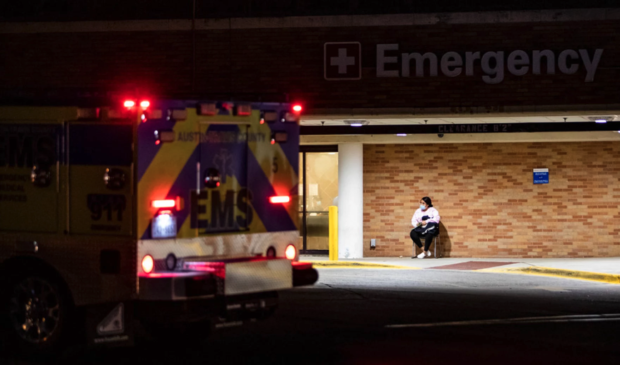Sendero survey finds demographic gaps in willingness to get Covid vaccines
Wednesday, March 17, 2021 by
Chad Swiatecki A study of at-risk residents in the Austin area shows large numbers of respondents willing to take a Covid-19 vaccine, with African American and Latino populations showing much more vaccine hesitancy.
The survey was conducted in November and December last year among members of the Sendero Health Plans, with just over 1,600 responses received. Nearly two-thirds of respondents said they plan to take a vaccine shot, with African Americans 47 percent less likely than others to receive an injection. Among Latino respondents that drop-off was 15 percent, while women were 19 percent less likely than men to get vaccinated for Covid.
“Our goal was to understand if any hesitancy in getting the vaccine existed so we could work with our members and the community to help them make informed decisions about their health,” Sendero CEO and President Wesley Durkalski told the Austin Monitor. “This study shined the light on just where that hesitancy existed, particularly among individuals of Black or African American race.
“We also wanted to assist local public health officials in developing effective engagement and delivery strategies for this vaccination campaign across the entire Austin community, and we believe this study provides valuable insights to achieve that goal.”
The survey follows a recent estimate from Sendero consultants that around 1 million doses of the vaccine need to be administered locally to achieve herd immunity of around 80 percent. At the current rate of about 25,000 doses given per week, it is expected that the Austin area would be largely protected from the virus by late December 2021.
The data is the most comprehensive picture of attitudes toward vaccines in the area, and health care experts said it must be put to use to improve the numbers of vaccinations given in marginalized communities.
“To achieve herd immunity, at least 70 percent of our population must be vaccinated, targeting historically underserved and marginalized communities living in ZIP codes with the lowest 25 percent of census measures … (of) known determinants of health,” said Cynthia Valadez, a member of the Central Health board of managers, during a press conference to discuss the findings.
“What we don’t have is data that shows exactly how many doses have been injected, how much of the vaccine has gone to residents living in the highest-poverty neighborhoods with the highest incidence of Covid and death, and comparing this information to the wealthiest parts of Travis County.”
John Litaker, the principal researcher for the study, said Sendero officials expected to see differences in attitudes among different racial and age groups, but the large gaps in the results point to large portions of the community that could remain vulnerable to the virus if outreach and education steps aren’t taken.
“Some of the differences were really stark, like with the African American race … and the fact that they’re 47 percent less likely to take the vaccine,” he said.
“The reality of that is almost one of every two persons who identifies as African American has issues with taking the vaccine. That’s concerning from a community perspective, because it’s a large segment of the community that for one reason or another is unsure about this vaccine, and that impacts the ability of the community to get back to normal.”
Some early attempts at outreach have been successful, said Stephanie Hayden-Howard, director of Austin Public Health, sharing the example of holding a virtual information session with a local Bible study group. She said many of those in the audience were more open to getting the vaccine after getting their questions answered.
“Some of the findings are surprising to me. We always knew there would be some level of vaccine hesitancy, but what surprised me is that more females were saying no,” she said, adding that Austin Public Health has eight contracts active with groups conducting education around the vaccines for different demographic groups.
“It’s important to continue those conversations and understand why people are hesitant to receive the vaccine.”
Litaker said health experts across the country likely weren’t proactive enough in designing programs to get vaccines administered. He has started following up with individual respondents, gathering feedback from vaccine-hesitant residents to learn their motivations and what could be done to change their minds.
“What we didn’t do is plan to get (the vaccine) out. We knew it was coming, but we should have been saying, when the vaccine gets here how do we get it in people’s arms? With this data we now know what is going on in our communities, and if we have 100,000 people vaccinated in Travis County we still have a lot to go – roughly, a million more doses to put in people’s arms. The silver lining is we can still create the messaging to get to the right people to help them make the right decision.”
Durkalski said a follow-up survey expected to be released in April will gather more data about the cause of vaccine hesitancy, with the goal of increasing the rate of vaccinations in those groups.
Editor’s Note: This story has been corrected. A previous version stated immunity would be attained by 2022.
The Austin Monitor’s work is made possible by donations from the community. Though our reporting covers donors from time to time, we are careful to keep business and editorial efforts separate while maintaining transparency. A complete list of donors is available here, and our code of ethics is explained here.
You're a community leader
And we’re honored you look to us for serious, in-depth news. You know a strong community needs local and dedicated watchdog reporting. We’re here for you and that won’t change. Now will you take the powerful next step and support our nonprofit news organization?











